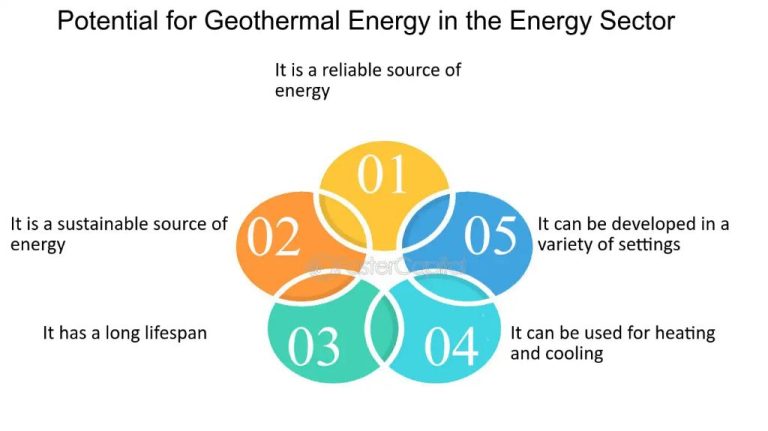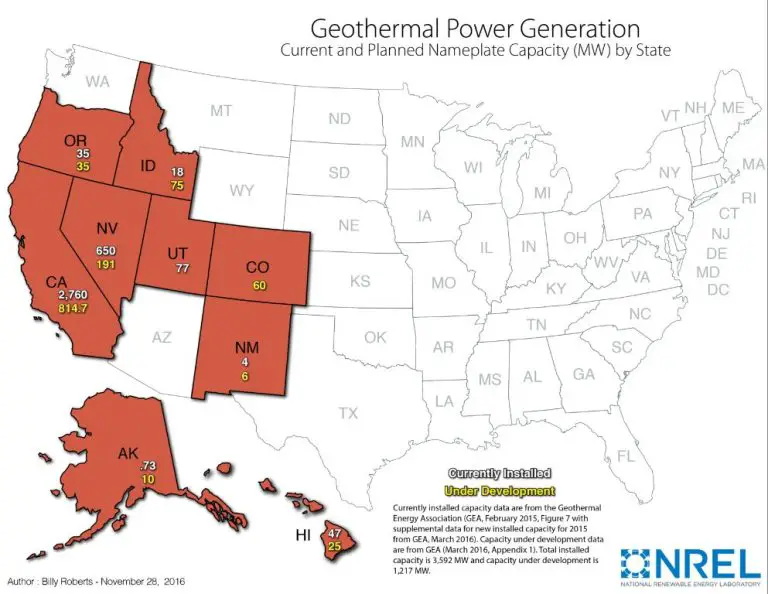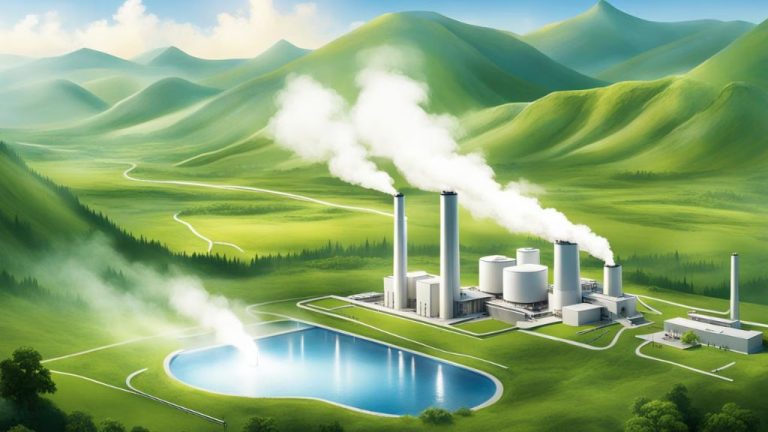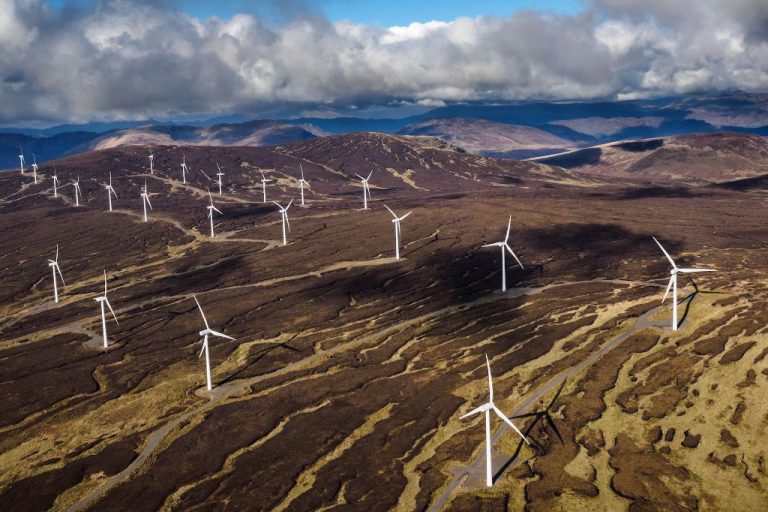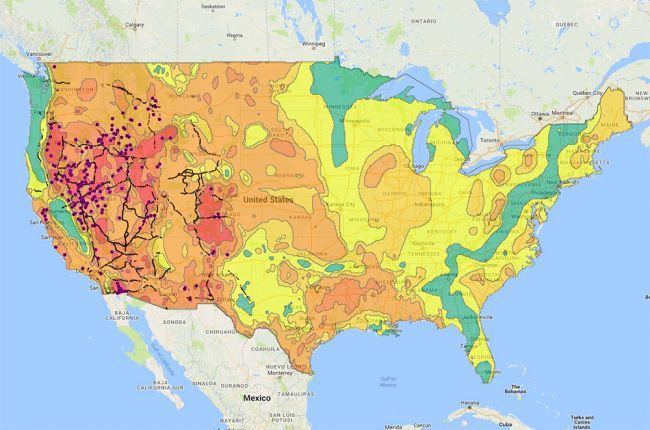How Does Thermal Energy Flow In The Earth’S Layers?
Thermal energy refers to the internal energy present in a system due to the motion and interactions of its particles. On Earth, thermal energy flows from warmer to cooler areas through processes like conduction, convection, and radiation.
The Earth is structured in layers based on differences in composition. From surface to center, these layers are the crust, mantle, outer core, and inner core. Understanding how thermal energy moves between these layers is key to explaining volcanic activity, plate tectonics, and Earth’s magnetic field.
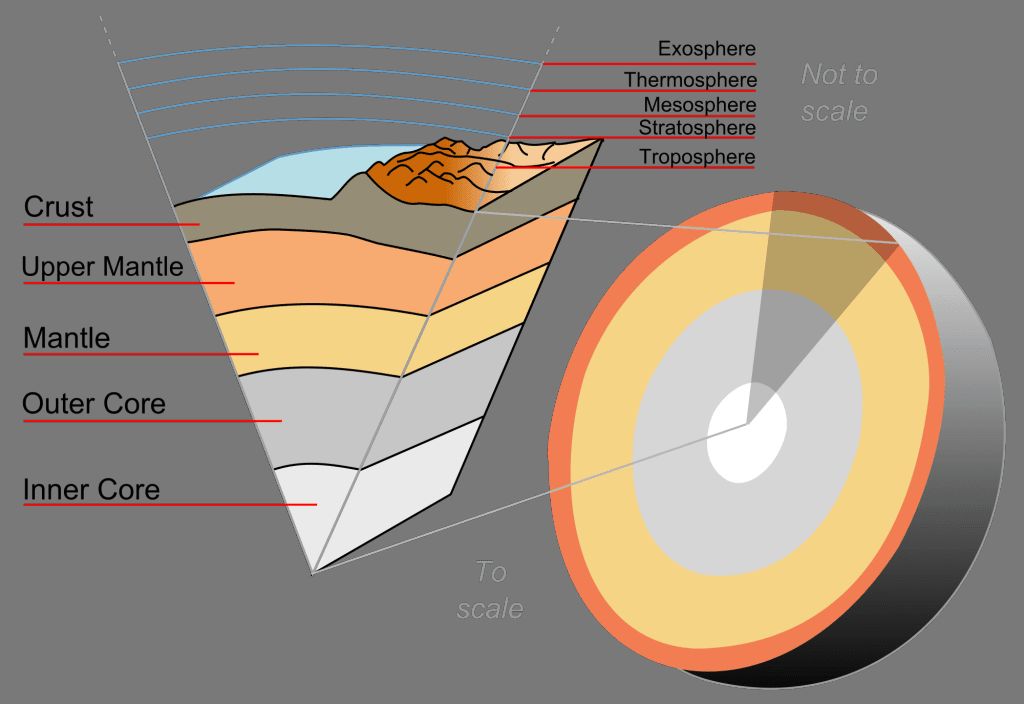
Earth’s Crust
The Earth’s crust is the thinnest layer of the planet. It is made of solid rock that contains continental and oceanic crusts. The continental crust is thicker and contains older rocks while the oceanic crust is thinner and contains newer rocks. The average thickness of the continental crust is around 30-50 km while the oceanic crust is around 5-10 km thick.
The Earth’s crust is a poor conductor of heat. It does not transfer heat well compared to the other layers. This is due to its solid composition and the presence of different minerals that are poor heat conductors. The crust acts as a thermal blanket, absorbing the heat from the interior layers but not allowing much transfer through to the surface. This creates a temperature gradient as the lower crust is hotter than the upper crust.
Lithosphere
The lithosphere is the rigid outer layer of the Earth, composed of the crust and upper mantle. It includes the crust and the top portion of the upper mantle. The lithosphere is about 80-200 kilometers thick. It is considered a rigid layer because it is brittle and fractures under stress, unlike the more ductile asthenosphere underneath it.
The lithosphere is rigid and does not flow. As a result, heat transfer through the lithosphere is very slow compared to the mantle underneath. There is little convection and the lithosphere acts as a thermal blanket, insulating the interior of the Earth. The slow rate of heat transfer means high temperatures can build up beneath the lithosphere, eventually causing the lithosphere to split apart at plate boundaries.
The older and colder a piece of lithosphere is, the thicker and more rigid it becomes. The oceanic lithosphere is relatively young and thin at ocean ridges where new crust forms. As the oceanic plates move away from the ridges over millions of years, the lithosphere gradually thickens and cools.
Asthenosphere
The asthenosphere is the upper part of the mantle below the lithosphere. It’s ductile and soft, allowing convection currents to move through it. This convection allows heat from the Earth’s core to rise up to the lithosphere through the asthenosphere. The asthenosphere begins at depths of around 100-150 km below the surface.
The high pressures deep in the mantle cause rocks to deform ductily rather than brittley. This allows solid mantle rocks to slowly convect and flow, carrying heat upwards from the core. Seismic waves also travel slower through the hot asthenosphere, which indicates it is less rigid than the lithosphere.
Convection currents in the plastic asthenosphere allow tectonic plate motions on Earth’s surface. As heat rises through the mantle it causes circulation, moving the tectonic plates above across the planet over geologic timescales.
Lower Mantle
The lower mantle makes up the majority of the Earth’s mantle, extending from 670-2,890 km below Earth’s surface. At around 1,800 miles (2,900 km) thick, the lower mantle comprises the thickest layer of the Earth.
The extreme pressure and temperature deep within the Earth keeps the lower mantle in a rigid state. Even though temperatures may exceed 4,000°C (7,230°F), the vast pressure causes the lower mantle to act like an extremely viscous fluid. This prevents convection currents from forming on the large scale they do in the upper mantle.
As a result, heat transfer through the lower mantle occurs extremely slowly. Scientists estimate the lower mantle consists of minerals rich in magnesium and iron, which conduct heat poorly. This further inhibits thermal conduction through the layer. Though the core-mantle boundary facilitates some heat transfer from the outer core into the mantle, temperatures gradually decrease through the massive lower mantle layer.
Outer Core
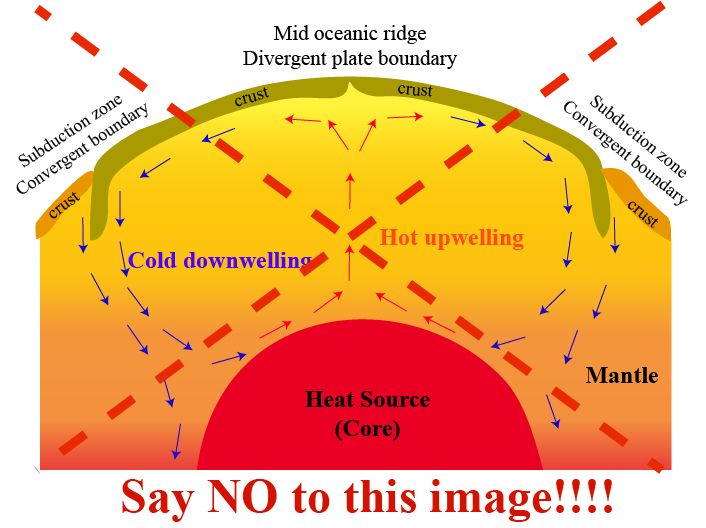
The outer core is composed mostly of iron and nickel and is in a liquid state. This liquid state allows for convection currents to flow, which enables efficient heat transfer. As heat from the inner core rises, it causes the liquid iron and nickel to move in slow, continuous cycles. This allows the outer core to act as an extremely efficient conductor for the internal heat emanating from the Earth’s interior. Convection currents in the outer core likely contribute to the generation of the Earth’s magnetic field through the dynamo effect. So the outer core’s liquid state and composition play a key role in moving thermal energy from the inner Earth and generating crucial systems like the magnetosphere.
Inner Core
The inner core is the innermost layer of the Earth and is a solid iron ball made up mostly of nickel and iron. It extends from the lower part of the outer core to around 5,150 km below the Earth’s surface. The temperature of the inner core is extremely high, estimated to be around 5,700 K, making it the hottest layer of the Earth.
The high temperature is a result of the immense pressure from the rest of Earth’s mass bearing down on it and from the latent heat released during crystallization as the liquid outer core slowly solidifies onto the inner core. The inner core is able to stay solid despite the high temperature due to the immense pressure.
The inner core has high thermal conductivity, allowing it to transfer heat efficiently from the core outward toward the mantle. Convection currents in the outer core driven by heat from the inner core plays a pivotal role in generating the Earth’s magnetic field through the geodynamo process.
Main Methods of Thermal Energy Flow
Thermal energy is transferred in the Earth through three main methods: conduction, convection, and radiation.
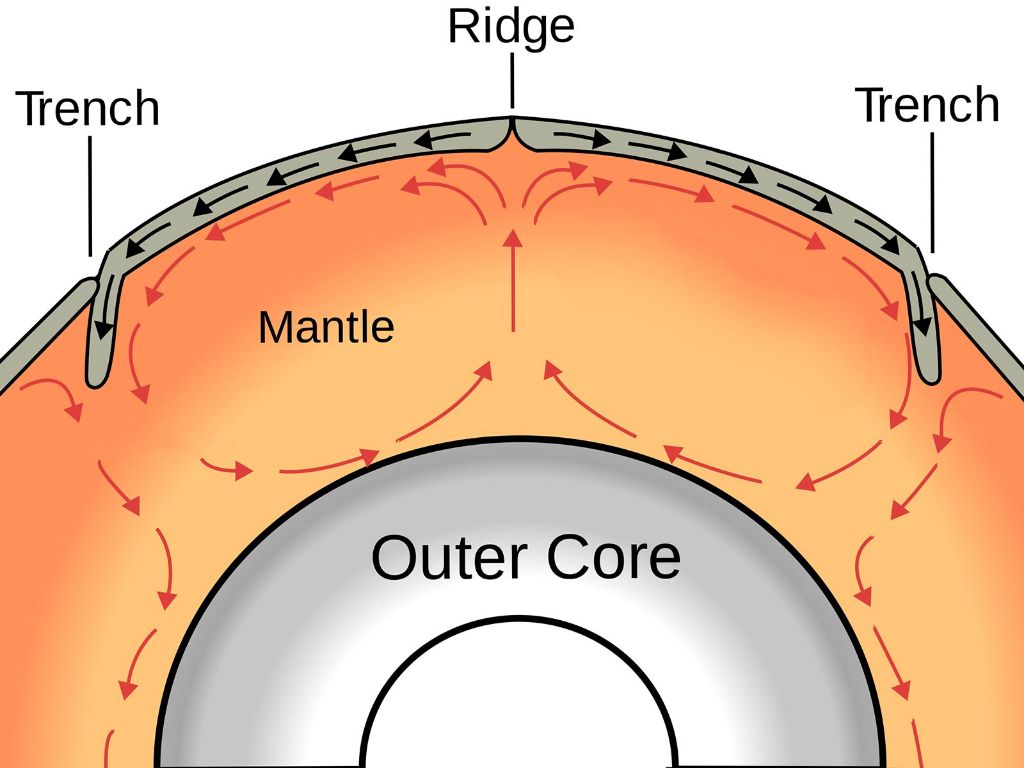
Conduction is the transfer of heat between substances that are in direct contact with each other. It occurs when atoms vibrate against each other, transferring kinetic energy. Conduction is most significant in solids, where atoms are tightly bonded.
Convection is the transfer of heat by the movement of currents within a fluid. As material heats up, it becomes less dense and rises, while cooler material sinks down, creating circulation patterns that transfer heat. Convection occurs in the Earth’s mantle due to circular mantle currents.
Radiation is the transfer of heat via electromagnetic waves, or photons. All objects emit radiation related to their temperature. Radiative heat transfer does not require a medium like conduction and convection. In the Earth, radiative heat transfer occurs between the molten outer core and lower mantle.
Plate Tectonics
Plate tectonics play a key role in the transfer of thermal energy within the Earth. The motion of the plates is driven by large convection currents in the mantle. As heat from the Earth’s core rises, portions of the mantle begin to melt and become less dense. This causes the lighter, more buoyant material to rise up towards the surface. As it cools near the surface, the material becomes denser and sinks back down towards the core. This circular motion creates convection currents that drive the movement of the tectonic plates.
As the tectonic plates move, they transfer heat between different regions of the planet. Oceanic plates carry heat from the mantle up to the seafloor as they spread apart at mid-ocean ridges. The plates then carry this thermal energy across the surface as they move. The plates eventually sink back into the mantle at subduction zones, bringing the heat with them. This cycle constantly circulates heat from the deep interior outwards toward the surface. It is estimated that nearly 90% of the Earth’s total heat loss occurs through plate tectonics.
Therefore, the motion of the plates caused by convection currents in the mantle has a significant impact on the Earth’s thermal budget and surface heat flow. It is one of the primary mechanisms for transferring thermal energy between the interior and exterior of our planet.
Conclusions
In summary, heat energy transfers from the Earth’s inner layers outwards to the surface through a combination of conduction and convection. The core is the hottest part as residual heat from the planet’s formation still emanates from this central region. Convection currents in the outer core help transfer some of this thermal energy upwards into the mantle. Within the mantle, heat conducts slowly through the solid rock and heats up the asthenosphere which rises towards the surface in plumes, releasing energy. At plate boundaries, the lithosphere allows more rapid conduction to the surface where heat can radiate into the atmosphere and space. Overall, without the constant influx of thermal energy from the core, the surface would eventually cool down. This internal heat flow helps drive key Earth systems like mantle convection, plate tectonics, and volcanism. Understanding these thermal processes within the planet is crucial to fields like geology, seismology, and climate science.


